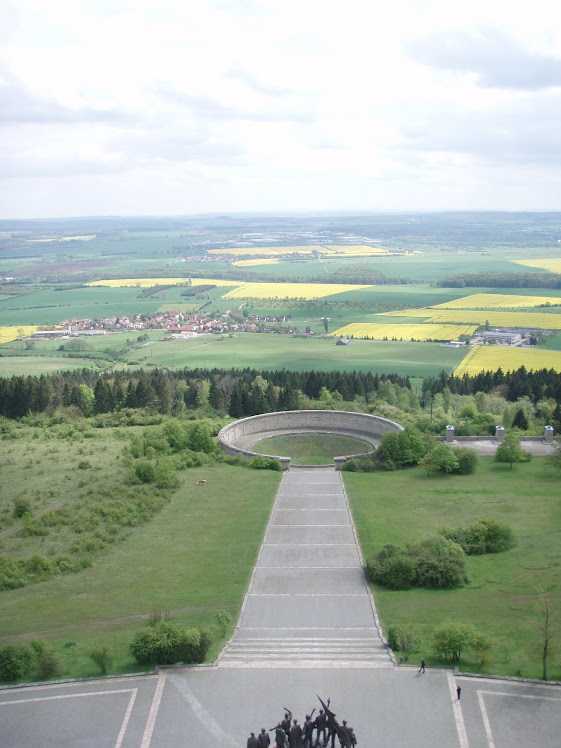
 Buchenwald was one of the first concentration camps, and also the largest in Germany. It is located on Etter Mountain right near the town of Weimar and was established in July 1937. Barracks where the guards once slept still stand today. After liberation, on April 4, 1945, those barracks were turned into a hospital for the prisoners. Our study tour group, i
Buchenwald was one of the first concentration camps, and also the largest in Germany. It is located on Etter Mountain right near the town of Weimar and was established in July 1937. Barracks where the guards once slept still stand today. After liberation, on April 4, 1945, those barracks were turned into a hospital for the prisoners. Our study tour group, i ncluding the survivors, stayed in these barracks for two nights while visiting the camp. Again, not many things still stood in the camp, but those that did were extremely significant. A "reward" building still stood in which prisoners, who were not Jewish, could go to buy food, or females after being rewarded for good behavior. The Jewish prisoners were never allowed to receive rewards and being that the camp was mainly for men, women were not that common either. However, the ones that were there were exploited and used for sex. We were told that sometimes, women would be raped ten times in an hour! This really bothered one of our survivors, because he explained to us that his mother was raped to death and killed this way at a camp.
ncluding the survivors, stayed in these barracks for two nights while visiting the camp. Again, not many things still stood in the camp, but those that did were extremely significant. A "reward" building still stood in which prisoners, who were not Jewish, could go to buy food, or females after being rewarded for good behavior. The Jewish prisoners were never allowed to receive rewards and being that the camp was mainly for men, women were not that common either. However, the ones that were there were exploited and used for sex. We were told that sometimes, women would be raped ten times in an hour! This really bothered one of our survivors, because he explained to us that his mother was raped to death and killed this way at a camp. Another building that still stood was the crematorium. the crematorium was one of the hardest buildings to walk through. Many of the original pieces remained inside of it. When you first walked into the crematorium, there was a white table. This table was used for experiments on the prisoners. As we continued to walk through, we passed another room full of urns. Finally we got to the room where the actual oven were. The ovens were still in tact, and it was a very erie experience. People placed flowers and memorials around the ovens, which was a little calming. In the basement of the crematorium was another torture chamber. There were hooks as high up as the ceiling. The Nazi guards would hang people from these hooks for hours or days on end, and eventually the prisoners died from it.
Oddly enough, the crematorium stood across from a zoo. The zoo was directly outside of the camp fence. It was visited by the guards and their families, and wasbuilt after the crematorium. As bodies were being burnt inside the camp grounds, guards took their children to the zoo to see the animals right outside. This shows how normal the killings of the people in the camp became. It was such an an everyday thing that outside the gates their lives were going on as it usually would and the killing just became a normal, everyday occurance to them.
Though many of the buildings were g
 one, a memorial was made near the front entrance. I found this to be one of the most interesting memorials. The artist who desined it made it so the center of it stayed around 98.6 degrees farenheit, or the temperature at which life is needed to be sustained; the opposite of which this camp once stood for.
one, a memorial was made near the front entrance. I found this to be one of the most interesting memorials. The artist who desined it made it so the center of it stayed around 98.6 degrees farenheit, or the temperature at which life is needed to be sustained; the opposite of which this camp once stood for. About one mile down the road from the camp itself was a large monument that towered over the trees around it. It was on the top of the hill, and could be seen for miles around. This monument was there to remember all the resistance fighters and political prisoners of Buchenwald (because 
When you enter the memorial, you walk down a flight of stairs, and on the left side o





No comments:
Post a Comment